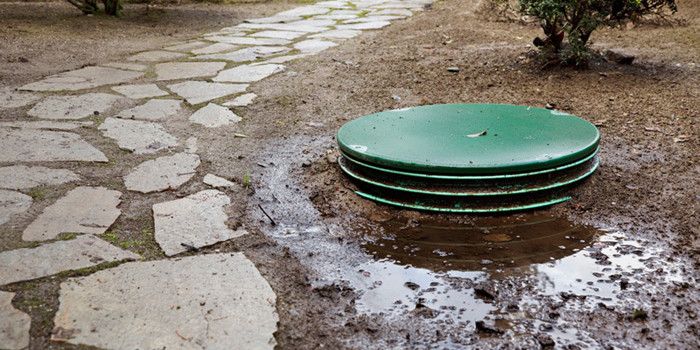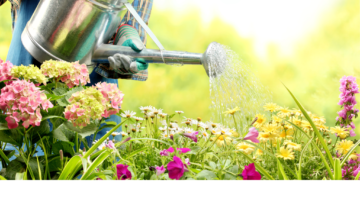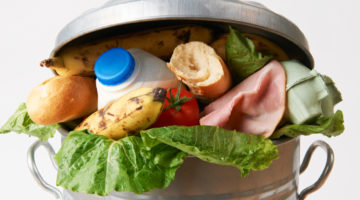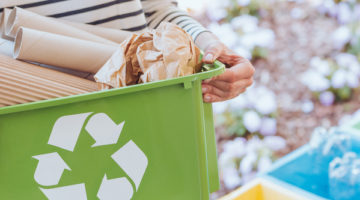
Recycling domestic sewage
Water is becoming an absolutely key resource in the UK, especially in the south and the east of the country. With supply limited as a result of increased frequency of droughts, and ever increasing volumes of water demanded, recycling water is imperative to ensure supply can still meet demand. Recycling domestic sewage is one way of recycling water, and this also has the added benefit of cutting the cost of industrial sewage treatment processes. Domestic sewage treatment is a relatively simple process and is described in detail below, however first it is important to make the distinction between greywater and blackwater.
Greywater is the wastewater that comes from showers, washing machines, and sinks. It may have particles and contaminants but they are not dangerous.
Blackwater is sewage wastewater from toilets or dishwashers and can contain food particles, faeces, and other human bodily fluids which are considered hazardous both to the individual and, if released into the ground, soil.
Currently it is normal for greywater to get recycled while blackwater gets disposed of and is treated by properly installed sewage treatment works.
Current practices are based, understandably, on assumptions of hygiene issues. Indeed, treatment of blackwater is more complex than the treatment of greywater, but despite the added complexity there is still a strong argument to recycle this type of sewage wastewater; with the following sections summarising the processes and costs and benefits of doing so.
How the blackwater recycling process works
Blackwater is generally not treated domestically, but instead the process is completed by centrally installed sewage treatment works. However, there are reliable systems now that act as hygienic domestic sewage treatment works, filtering the blackwater sufficiently so that it can be used outdoors in watering lawns and plants.
Top of the range systems are available that can even filter blackwater to purity levels that make it fine for human consumption. However these systems come at a very high cost with high associated maintenance costs. There is also a certain stigma attached to this, with people uneasy about drinking ’cleaned up toilet water’.
The filtering system for removing usable water from blackwater sits externally to the house. Water is piped to it, and then it goes through a process before being used to water the lawn or non-food gardens via underground pipe systems. As discussed above, unless you have a top of the range domestic sewage treatment works in your back garden, the recycled water from blackwater is not normally suitable for drinking. If you intend to use the water in the garden, it is advisable not to use this water on edible crops because it could still contain harmful bacteria, which poses a danger to the individual.
The blackwater filtering process
The following section looks at five steps involved in the filtration process, that takes place as part of your domestic sewage treatment works.
The primary tank
This where the sewage wastewater initially runs into as it flows from the home via gravity and pipes. Here, the sewage sits for a period of time, usually 24 hours, while large volume of bacteria works to break down the big particles. After this short period the settled blackwater is pumped to the secondary tank.
The secondary tank
When the settled blackwater is pumped away from the primary tank, it goes into the secondary treatment tank. This tank is then further separated into three stages to help with the continuing processes.
Ventilation stage
The first chamber in the secondary treatment tank begins the ventilation stage. This is where water and air are injected into the tank at timed intervals so that the tank contents are churned. Bacteria in the tank then settle so they can feed on the sludge in the tank. When this is complete, the water is moved to the sludge settling chamber.
Sludge settling chamber
The water that is piped from the ventilation chamber ends up in the sludge settling chamber. A bacteria biomass mechanism forces sludge downwards and the partially treated water upwards to be collected and sent on to the irrigation chamber stage.
Irrigation chamber
When the water is piped out of the sludge settling chamber, it is eventually pushed into the irrigation chamber. Here, it is clarified and chlorinated, which is the last step of the process. The water can then be piped out of the system and sprinkled on plants in the garden.
Final thoughts on treating blackwater
There is certainly a stigma of drinking treated blackwater, however recycling water is an important aspect of a more sustainable life, even if the water is only to be used in the garden. In April 2012, the UK suffered a hosepipe ban due to lack of rainfall over the prior couple of winters. In fact it was noted that the preceding 18 months were the driest on record for more than a century. Therefore we all need to do our bit and try to use less water, or recycle more of the water we use – so recycling blackwater is a great way to help this cause.
The fact that many ‘off-grid’ remote places already operate their own domestic sewage treatment works in their back garden shows that this technology is reliable and proven, therefore this technology may be suitable for installation for the home or a community that wants to do its bit to recycle water.
Benefits
- Water conservation – using recycled blackwater to water lawns and non-food gardens conserves fresh water. Currently there is wastage, as large volumes of potable water are used on lawns and gardens in the UK.
- Saving energy – treating the sewage at home saves money (for the treatment companies) rather than waiting on the waste to be treated by processing plants, which costs money. This saves energy upfront and removes harmful bacteria.
- Habitat protection – when blackwater is recycled near source, it lowers the risk of waste water seeping into natural habitats on the way to a treatment plant.
- Plant growth – the plants that are grown with recycled blackwater rarely need any fertiliser because the water is rich in nutrients and plants feed off this.
Limitations
- Blackwater recycling systems are expensive – installation, maintenance and repair costs are high. The actual repairs may be complex jobs.
- Maintenance process – the system usually requires maintenance every three months or so by the company that installed it. A fixed charge is always there every time the supplier comes out to service the system.
- Smell – most people find there is a negligible smell, others complain they smell the sewage all the time. The process is exacerbated from dying bacteria.
Cost
- Can be expensive












No Comments yet! Be the first one.